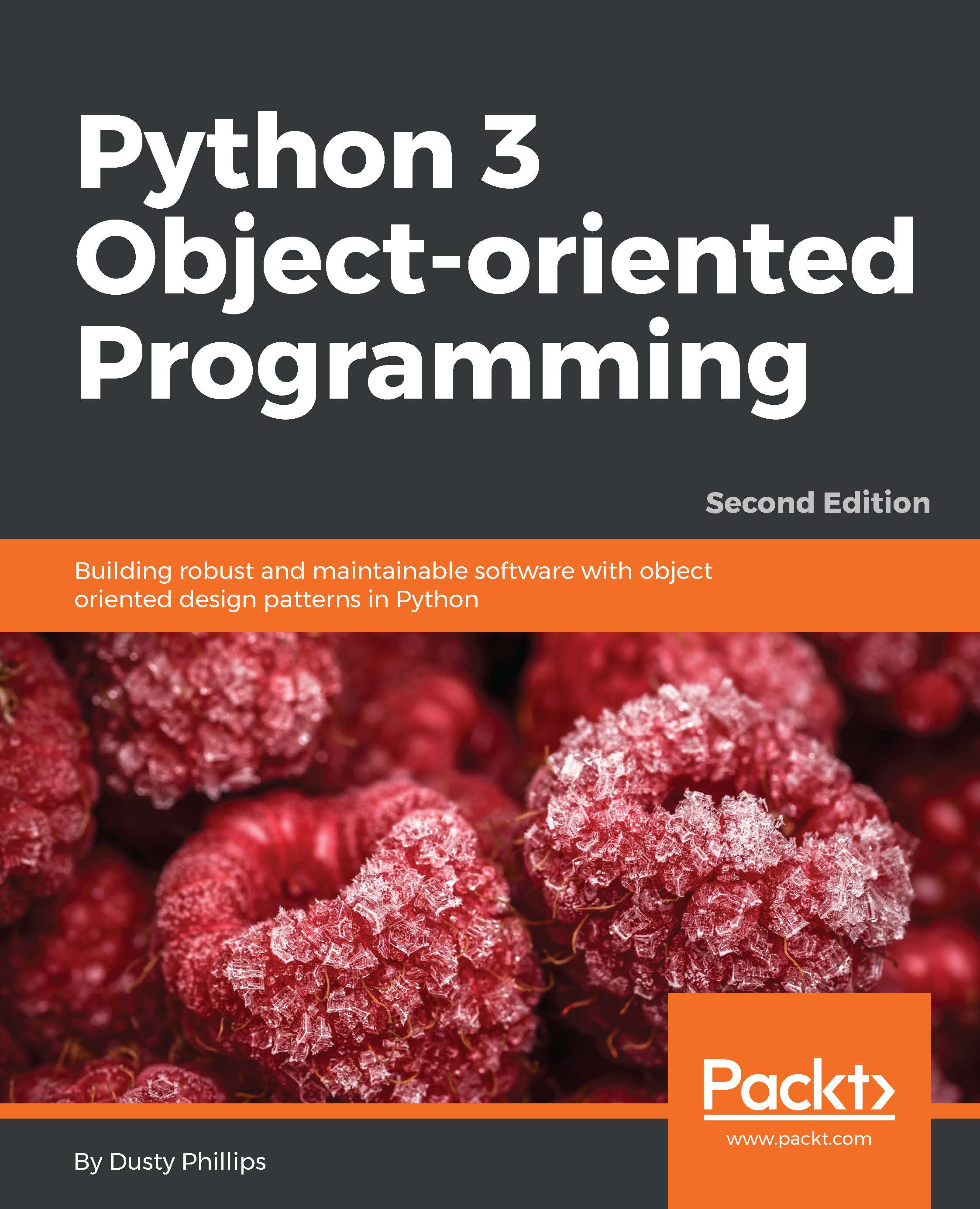Unit testing
Let's start our exploration with Python's built-in test library. This library provides a common interface for unit tests. Unit tests focus on testing the least amount of code possible in any one test. Each one tests a single unit of the total amount of available code.
The Python library for this is called, unsurprisingly, unittest. It provides several tools for creating and running unit tests, the most important being the TestCase class. This class provides a set of methods that allow us to compare values, set up tests, and clean up when they have finished.
When we want to write a set of unit tests for a specific task, we create a subclass of TestCase, and write individual methods to do the actual testing. These methods must all start with the name test. When this convention is followed, the tests automatically run as part of the test process. Normally, the tests set some values on an object and then run a method, and use the built-in comparison methods to ensure that the right...
























































